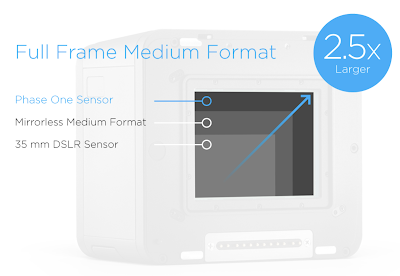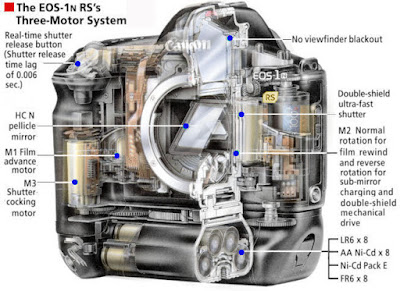Follow Up: Effect of Format Size on DOF
A follow-up to this entry:
 |
| We previously showed that Canon was correct to state that increasing format size reduces DOF Left: 35mm format Right: APS-C format Image: Canon Japan |
I thought of the following potential additional experimental setup. It is based on the fact that it makes it much easier when you compare much smaller formats with formats much larger. The problem is that I don't own or have access to a Pentax Q10 camera with the 15-45mm f/2.8 lens. The others I do have access to. I even looked to see how much a Q10 with this lens would cost on eBay...but it seems absurd to spend money on a camera just to prove that our current scientific understanding of optics is correct.
Here is the setup:
1. Pentax Q10 camera (5.53× crop factor) with 06 Telephoto Zoom 15-45mm f/2.8 lens (35mmF equivalent of an 83-249mm lens) set at 35mm focal length (35mmF equivalent of 193.5mm focal length)
2. An APS-C camera eg Fuji X camera with a 35mm focal length lens (35mmF equivalent of 53mm focal length)
3. A 35mmF camera (e.g. Canon 5DsR) with a 35mm focal length lens
4. A 4433 medium format camera (eg Fuji GFX50S) with a 35mm focal length lens (35mmF equivalent of a 27.65mm focal length lens)
All cameras set at 35mm absolute focal length, f/2.8, and shooting the same subject with the distance from subject maintained constant. Shooting at 193.5mm effective 35mmF equivalent focal length will give you the shallowest DOF. Shooting at 27.65mm effective 35mmF equivalent focal length will give you the shallowest DOF. Reason: wide angle lenses have shallower DOF than telephoto lenses, no conclusion about format size can be drawn as the experiment is dominated by the effect of angle of view/effective focal length on DOF.
Next compare:
1. 35mm format camera shooting at 193.5mm focal length
2. 35mm format camera shooting at 53mm focal length
3. 35mm format camera shooting at 35mm focal length
4. 35mm format camera shooting at 27.65mm focal length
All cameras set at f/2.8, and shooting the same subject with the distance from subject maintained constant. The longer the focal length the shallower the depth of field will be, just as predicted by the DOF online calculator.
Next compare:
Pentax Q10 camera with the 06 15-45mm f/2.8 lens:
1. Set at 15mm f/2.8
2. Set at 25mm f/2.8
3. Set at 35mm f/2.8
4. Set at 45mm f/2.8
Distance to subject and background kept the same. Repeat the same thing with a 35mmF camera mounted with a 70-200mm f/2.8 lens. You will see that even with the same zoom lens, the longer the focal length, the shallower the DOF. Zooming does not merely "take a crop" of the same image without impacting on the circle of confusion (as would happen when cropping in post-production). You will see more background blur at the telephoto end than at the wide end of the zoom lens. This behaviour is correctly predicted by the online DOF calculator.
Next compare:
1. Pentax Q10 with 01 model 8.5mm lens (35mmF equivalent of a 47mm lens)
2. An APS-C Fuji X camera with a 31mm focal length lens (35mmF equivalent of a 47mm lens)
3. A 35mmF camera with a 47mm lens
4. A 4433 format camera with a 59mm lens
All cameras set at f/4 (there are no native medium format lenses that get you to 59mm f/2.8), and shooting the same subject with the distance from subject maintained constant. Focal lengths like 31mm, 47mm, 59mm set on a zoom lens. You will then conclude that the larger the format, the shallower the DOF, as predicted by the DOF online calculator.
I have also found an alternative DOF calculator:
https://www.photopills.com/calculators/dof
It's a bit user-friendlier and better updated for camera models than the DOF Master calculator. The only caveat is that it lacks the values for the circle of confusion.
Here is also another blog that goes through the same issues as I do and comes to identical conclusions:
https://neilvn.com/tangents/full-frame-vs-crop-sensor-cameras-comparison-depth-of-field/
Notice once again that the author points readers towards a DOF calculator and then asks readers to corroborate whether the calculations are correct.



Comments
Post a Comment